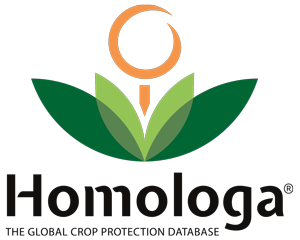The global crop protection database
Homologa®, the Global Crop Protection database, offers detailed standardized information on registered Crop Protection Products, Maximum Residue Limits and Seeds data. Our MRLs data provides details on both current and future pesticide residue values, and our Crop Protection database includes information related to new and registered brands, expiration dates, active ingredients, approved crops, pests and application doses, among others.
More informationHarmonized pesticide registration data of more than 350,000 products from more than 90 countries full MRLs data from more than 30 legislations of reference and Seeds data from more than 20 countries
Homologa® is a flexible tool that can be accessed via online or embedded into any data system via custom API solutions. Our database is constantly growing, adding new information and sources on a regular basis. It is currently comprised of pesticide data from more than 350,000 pesticide products in more than 90 countries, MRLs data from more than 30 different legistations and Seeds data in more than 20 different countries, all in English and each local language, accounting all in all for more than 50 million entries globally.
We gather data from private and public sources and make it available
Homologa® compiles up-to-date information from both public and private phytosanitary data sources, allowing users to access harmonized and comparable pesticide data through a user-friendly interface. Our Global Crop Protection database offers a comprehensive solution to all stakeholders in the agricultural and food market using crop protection and pesticide residue data, from leading multinational corporations to farmers, digital farming industries, as well as decision makers in the public sector.
More informationFarm Management Information Systems
Add context value to your data, provide helpful crop protection functionalities to your portfolio and offer real support to your users - an immediate USP at your service.
More informationOnline dealers and distributors
Complete and extensive product lists, complex filtering options or product comparisons and helpful context information - you name it, Homologa® has it.
More informationFood safety and certification laboratories
Seamless LIMS integration provides MRL information by crop and usage where necessary, available and up-to-date around the world anywhere and anytime.
More informationEducational, Research & Public Institutions
Access harmonized, reliable, consolidated global crop protection data and research by segments to unleash the full potential of hundreds of product criteria.
More informationThe Ag Input Industry
Monitor product brand registrations by markets, product segments or usage, screen for active ingredient replacement candidates and stay on top of market dynamics.
More informationFood industry
Compare destination and origin market MRLs, monitor treatment alternatives and ensure producer and supplier compliance with common public or private standards.
More information

